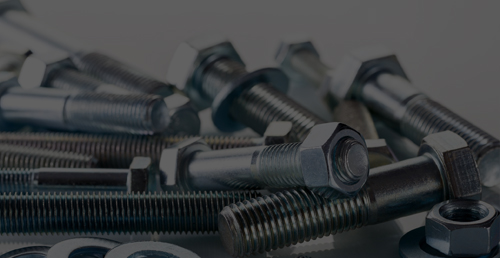Sheet Metal Screws with Washers for Enhanced Fastening Solutions
Sheet Metal Screws with Washers An In-Depth Look
Sheet metal screws are essential components in various construction and manufacturing applications, designed specifically to fasten metal sheets together. These screws are characterized by their sharp threads that enable them to penetrate metal surfaces with ease. When paired with washers, they provide enhanced stability and strength to the connection. In this article, we will explore the benefits, applications, and types of sheet metal screws with washers, as well as best practices for their use.
Understanding Sheet Metal Screws
Sheet metal screws are typically made from stainless steel, carbon steel, or other ferrous materials, and they come in various sizes and thread configurations. They feature a pointed tip that facilitates insertion into metal substrates while providing a tight grip once fully seated. The threads on these screws are designed to hold securely in the material, reducing the likelihood of loosening over time.
The addition of washers to sheet metal screws is a common practice in fastening applications. Washers increase the surface area of the screw head, distribute the load more evenly, and reduce the risk of damaging the sheet metal surface.
Benefits of Using Washers with Sheet Metal Screws
1. Load Distribution One of the primary advantages of using washers is load distribution. The washer's larger surface area helps distribute the load of the sheet metal screw over a broader area, preventing localized deformation of the metal sheet.
2. Vibration Resistance In applications prone to vibration, such as automotive and aerospace industries, washers can provide additional resistance to loosening. Their presence helps maintain a tight connection, even as environmental factors cause movement.
3. Protection Against Corrosion When screws penetrate metal, exposure to moisture and corrosive materials can lead to rust and degradation over time. Using a washer, especially one made of a corrosion-resistant material such as plastic or stainless steel, can help protect the interface and extend the lifespan of the fastening.
4. Prevention of Damage Washers can prevent the screw head from digging into the metal surface, which can lead to unwanted damage and deformation. This is particularly beneficial when fastening softer metals that may be susceptible to scratching.
5. Sealing Effect Certain types of washers, such as rubber or neoprene washers, can provide a sealing effect against fluids and moisture, making the combined assembly more durable in harsh conditions.
Applications of Sheet Metal Screws with Washers
Sheet metal screws with washers find applications in a multitude of industries. Some common uses include
sheet metal screws with washers

- Construction They are used in framing, roofing, and siding applications, securing metal panels, brackets, and structural components. - Automotive In the automotive industry, they are utilized for assembling parts like body panels, undercarriage components, and engine covers. - Aerospace The aerospace sector relies on these fasteners to securely join metal sheets and components in aircraft manufacture and maintenance. - HVAC Systems Sheet metal screws are pivotal in the assembly of ductwork, ensuring secure and airtight joints.
Types of Washers
When selecting washers to pair with sheet metal screws, it’s important to consider the specific application requirements. Common types of washers include
- Flat Washers These provide a flat surface to distribute the load, making them suitable for most general applications. - Lock Washers Designed to prevent loosening due to vibrations, lock washers are ideal for high-stress environments. - Rubber Washers These offer sealing capabilities and are perfect for applications exposed to moisture that require a tight seal.
- Fender Washers Featuring a larger outer diameter, fender washers are excellent for distributing loads over a wider area, especially on thin sheet metal.
Best Practices for Use
1. Choosing the Right Size Always select a screw and washer combination that is appropriate for the thickness of the sheet metal being fastened.
2. Tightening Method Properly tighten the screws to ensure a secure fit without damaging the metal. Over-tightening can lead to stripped threads or deformation of the material.
3. Material Compatibility Ensure that the materials of the screw, washer, and the metal sheet are compatible to avoid galvanic corrosion.
4. Inspect Regularly Regular inspections of the fasteners can help detect any loosening or signs of wear, allowing for timely maintenance.
Conclusion
Sheet metal screws with washers play a crucial role in providing secure, durable, and stable connections in various applications. Understanding their benefits and proper usage can significantly enhance the effectiveness of metal assemblies and contribute to the longevity of structures and products. With careful selection and installation, these fasteners can meet the demanding requirements of modern industries.
-
Weatherproof Plastic Expansion Anchors for OutdoorNewsJun.06,2025
-
Sustainability in the Supply Chain: Eco-Friendly TEK Screws ProductionNewsJun.06,2025
-
Load-Bearing Capacity of External Insulation FixingsNewsJun.06,2025
-
Double Head Bolts: Enhancing Efficiency in Industrial MachineryNewsJun.06,2025
-
Corrosion Resistance in Chipboard Screws: Coatings for Wholesale DurabilityNewsJun.06,2025
-
Butterfly Toggle Bolts : Enhancing Structural ResilienceNewsJun.06,2025
